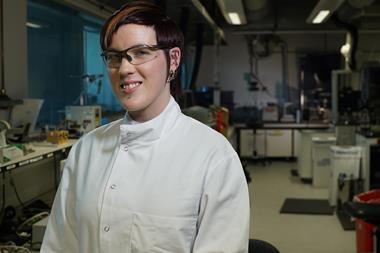Used cigarettes converted into efficient hydrogen storage material

The highest hydrogen storage capacity for porous carbons has been reported by scientists using cigarette butts as their starting material.1
Smokers across the globe generate over 800,000 tonnes of cigarette butts each year. This waste mainly comprises non-biodegradable cellulose acetate and toxic heavy metals that can leach into the environment. Robert Mokaya and Troy Blankenship, at the University of Nottingham, are exploring how to convert this dangerous waste into a hydrogen storage material.
Hydrogen is a promising low-carbon energy source and researchers are trying to produce materials that could contain it at high volumes and densities to produce economically viable car batteries.2 The US Department of Energy has set a target to achieve hydrogen powered cars capable of 5.5wt% hydrogen by 2020. ‘Under our hydrogen uptake measurement conditions – 77K and 20 bar pressure – most activated carbons store between 4 and 6wt% hydrogen. Our cigarette butt derived carbons achieved much higher values of 9.4wt%,’ explains Mokaya.
The team collected cigarette butts and heated them with water to 250°C under high pressure to produce a material called hydrochar, which contained nanoscale balls of carbon and oxygen. Next, they activated the material with potassium hydroxide at 800°C to create carbonates that break down into carbon dioxide, leaving behind a highly porous material.
‘The hydrogen storage capacity of these materials, although at low temperatures, is quite impressive, and I assume that this can be explained to some extent by the various functional groups present in the carbon as well as the residual metals’ says Kondo-Francois Aguey-Zinsou an expert in energy storage at the University of New South Wales, Australia. ‘The question is what is driving such high hydrogen capacity, and can we understand the key parameters and how this can be tuned to lead to the same level of storage capacity closer to the ambient?’ he adds.
The team is now looking into how metals and other contaminants interact during activation and how this influences the material’s storage capacity.
References
1 T S Blankenship and R Mokaya, Energy Environ. Sci., 2017, DOI: 10.1039/c7ee02616a (This paper is free to access until 2 January 2018.)
2 J Yang et al, Chem. Soc. Rev., 2010, 39, 656 (DOI: 10.1039/b802882f)












1 Reader's comment